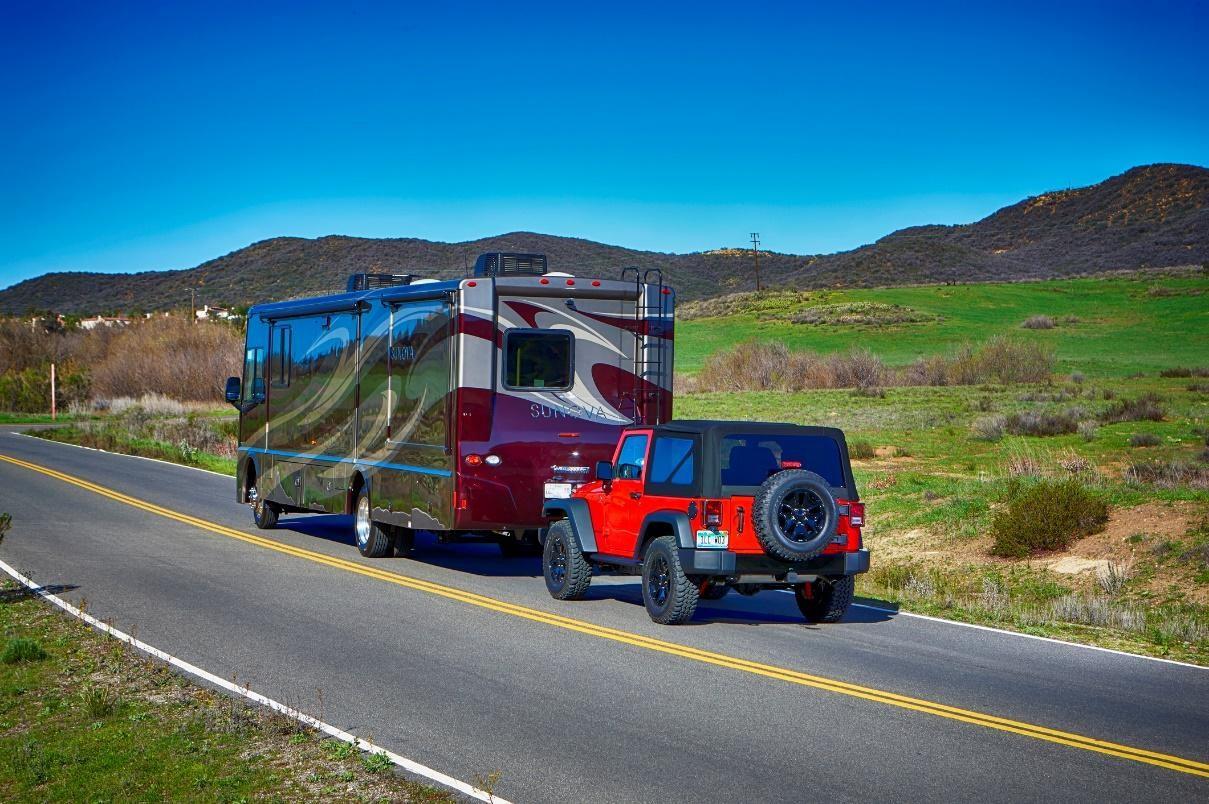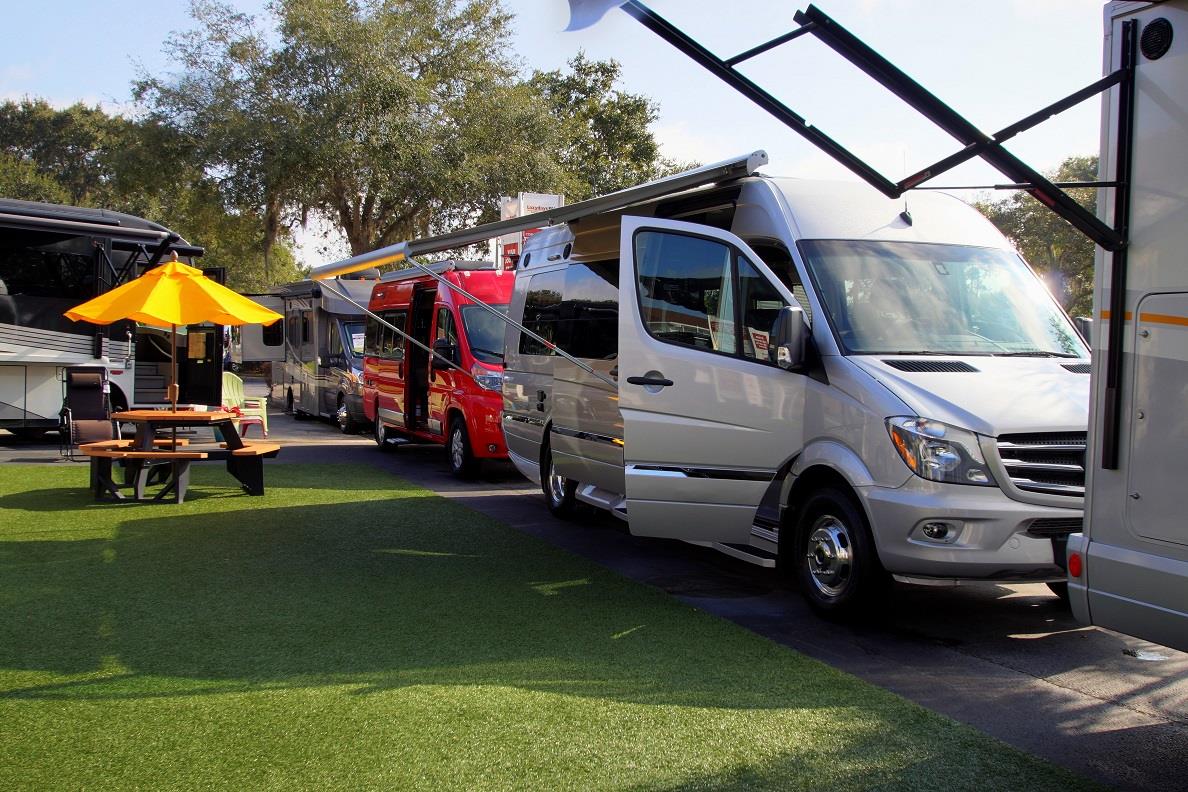
As a towable owner, you’re afforded the freedom to explore outside of your campsite with a tow vehicle. For motorhome owners, you can bring a boat, a few motorcycles/ATVs or another car! Being an expert RV tower takes a combination of the right skills and accessories and adds another dimension to your RV lifestyle. Check out the dos and don’ts of RV towing from Lazydays RV.
DON’T: Tow Without the Right Tools
RV towing begins and ends with your equipment. The right accessories can keep you safe and relaxed on the road, while the wrong equipment can make towing anything very difficult. Whether you are towing an RV with your car or truck, or towing another vehicle with your motorhome, your equipment requirements may be different, but the principles are the same.
It all starts with the proper hitch. Most towable RVs and motorhomes come standard with a receiver hitch. Depending on the class and model of an RV or motorhome, the weight/class rating for the hitch varies. RVers should never try to tow anything that exceeds their hitch’s gross trailer weight (GTW). Before towing, make sure to check the GTW of your RV or personal vehicle.
Two instances where non-standard towing equipment is required are for fifth wheel and gooseneck hitches, and when towing a vehicle, boat or trailer. Fifth wheels, which can only be towed by a pickup truck, utilize a special hitch that attaches to a truck’s bed. The hitch attaches via the rail system that forms the framework of a pickup truck bed. Fifth wheel hitches come in two standard types: fixed and sliding.
Fixed fifth wheel and gooseneck hitches are designed for trucks with beds that are 8 feet or longer. Since a fifth wheel hitch must be in front of a truck’s rear-axle, trucks with beds shorter than 8 feet can encounter clearance problems on sharp turns. Sliding hitches remedy this issue by sliding backward during sharp turns. Gooseneck hitches provide an improved turning radius and are great if you need added mobility for your towable RV.
When towing with your motorhome, RVers have three towing methods to choose from: four down, tow dolly or trailer. Four down towing involves towing your vehicle with all four wheels on the road. Tow dollies are typically used when towing a front-wheel-drive vehicle, while trailers are needed for boats, ATVs, motorcycles and vehicles that can’t be towed otherwise.
For all your towing needs, from hitches and tow bars to braking systems and tow dollies, visit your local Lazydays RV Accessories & More store!
DO: Practice, Practice, Practice
RV towing, whether driving with a towable RV or with a motorhome, is a skill that takes practice to become comfortable. Adding another vehicle or trailer requires a certain expertise from the RV driver. Two of the biggest differences RVers, both new and experienced, face is with braking and turning. With so much weight added to the rear of your vehicle, RVers should anticipate any turning or braking maneuver sooner than normal.
Trailer sway is another factor that many RVers need to be aware of when towing. With larger towable RVs like travel trailers and fifth wheels, crosswinds or blowback from large passing vehicles can cause them to sway and jostle around. Trailer sway occurs on turns, especially sharp ones, and can be particularly hazardous. If you experience consistent trailer sway while on the road or while taking turns at slow speed, a hitch adjustment or anti-sway bar may be required.
RV driving classes are the best way for first-timers or RVers who are new to towing to gain confidence on the road. Lazydays RV’s driver confidence course provides classroom and behind-the-wheel instruction from a motorhome driving expert.
DON’T: Exceed the Weight Limit
As mentioned earlier, the biggest factor all RVers must consider before towing is their vehicle or RV’s gross trailer weight. Receiver hitches are rated in five classes and differ by receiver size and their gross trailer weight (GTW) rating. The classes are:
- Class 1: Typically found on sedans and cross overs; Class 1 hitches typically feature a 1-1/4” receiver and have a GTW of up to 2,000 lbs. with a maximum trailer tongue weight of 200 lbs.
- Class 2: Common on sedans, CUVs, and minivans, Class 2 hitches have a 1-1/4” receiver and a GTW of up to 3,500 lbs. with a maximum trailer tongue weight of 300 lbs.
- Class 3: SUVs, CUVs, vans and trucks can feature Class 3 hitches. The standard receiver size is 2” and generally has a GTW of up to 8,000 lbs. with a maximum trailer tongue weight of 800 lbs.
- Class 4: Found mainly on trucks and SUVs, a Class 4 hitch uses a 2” receiver tube with a GTW of up to 10,000 lbs. and maximum tongue weight of 1,000 lbs.
- Class 5: With a square receiver size of 2.5”, Class 5 hitches are found on SUVs, standard pickup and other large trucks. Their GTW can be as low as 12,000 lbs. or as high as 20,000 lbs. and tongue weight between 2,400 to 2,700 lbs. Check the hitch rating on your larger SUV or truck for its exact specifications and gross trailer weight limit.
For other hitch types, gross trailer weight and tongue weight can vary based on the manufacturer and vehicle.
DO: Have All Towing Equipment Professionally Installed
Besides having the right RV towing equipment and confidence on the road, properly installed towing equipment is crucial to a safe, easy towing experience. Proper hitch installation and a secure connection to the vehicle or trailer being towed are safety checks that all RVers should follow before you hit the road.
The RV service experts at Lazydays RV can install a wide range of RV towing accessories. From flat towing to fifth wheel hitches, we offer convenient, quick-installation and same-day service in some cases. Schedule a service appointment or contact your local Lazydays RV dealership to learn more!
For more RV tips, road trip ideas and news on the latest accessories, stay tuned to the Lazydays RV blog.



